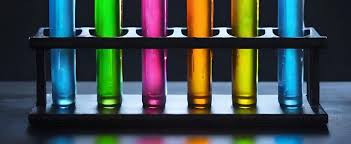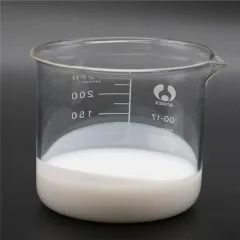Common additives for plastic color matching-EBS Ethylene Bis Stearamide Emulsion EBS Emulsion
Frequently made use of additives in plastic color matching include dispersants, lubes, diffusion oils, combining representatives, compatibilizers, etc. Generally come across resin ingredients include flame retardants, toughening agents, brighteners, UV preventions, anti-oxidants, antibacterial agents, antistatic representatives, and so on. The most common ones are fillers for price decrease or physical adjustment, such as light calcium carbonate, heavy calcium carbonate, talc, mica, kaolin, silica, titanium dioxide, red mud, fly ash, diatomaceous planet, wollastonite, glass grains, barium sulfate, calcium sulfate, and so on, in addition to organic fillers, such as wood flour, corn starch, and other agricultural and forestry spin-offs. Loading and enhancing materials include glass fiber, carbon fiber, asbestos fiber, artificial organic fiber, and so on
Intend the above ingredients are included in the product’s resources. In that situation, they should be included in the resin basic materials in the exact same proportion in the color-matching proofing so as not to generate a shade difference in the succeeding manufacturing.
(Additives for Plastic Color Matching)
Dispersant
Dispersant types consist of fat polyurea, hydroxy stearate, polyurethane, oligomeric soap, etc
Presently, the commonly utilized dispersant in the market is lubricating substance. Lubricating substances have excellent dispersibility and can also improve the fluidity and demolding efficiency of plastics throughout molding.
Lubricating substances are divided into internal lubes and exterior lubes. Internal lubricants have a particular compatibility with resins, which can minimize the cohesion in between resin molecular chains, minimize melt viscosity, and improve fluidness. External lubes have inadequate compatibility with materials. They follow the surface area of molten materials to develop a lubricating molecular layer, thereby reducing the rubbing in between resins and handling equipment.
Lubricants
According to the chemical framework, they are primarily split right into hydrocarbons, metal soaps, lubes that play a demolding role, fats, fat amides, and esters.
Such as vinyl bis ceramide (EBS)
EBS (Ethylene Bis Stearamide), likewise called plastic bis stearamide, is an extremely reliable interior and external lubricating substance and dispersant extensively made use of in the plastic processing industry. It appropriates for all thermoplastic and thermosetting plastics, including yet not limited to polyethylene (PE), polypropylene (PP), polystyrene (PS), polycarbonate (PC), polyamide (PA), polyester (PET/PBT), polyurethane (PU), phenolic resin, epoxy resin, and so on. Below are several of the main duties of EBS in these plastics:
(EBS Ethylene Bis Stearamide Emulsion)
Dispersion
As a dispersant, EBS can help equally distribute fillers and pigments throughout plastic handling, avoid load, and boost the dispersion and security of pigments and fillers. This assists enhance the color uniformity and mechanical residential properties of the final product. For instance, in masterbatch manufacturing, EBS can guarantee that pigment particles are evenly dispersed in the provider resin to make sure that consistent shade is shown in succeeding plastic items.
Inner lubrication
In the plastic melt, EBS can minimize the rubbing between molecules and the shear anxiety of the plastic melt, consequently minimizing the thaw viscosity and making the melt flow smoother. This helps in reducing stress during extrusion or injection molding, decreases processing temperature levels, and reduces molding cycles, while also reducing power usage, enhancing processing efficiency, and boosting the service life of devices.
Exterior lubrication
EBS creates a slim lubricating movie on the plastic surface area, which can decrease the rubbing between the plastic thaw and the metal mold, boost demolding efficiency, and protect against sticking of plastic items during molding. This not only assists to boost the surface coating of the product and decrease problems but likewise simplifies the post-processing procedure and boosts production efficiency.
Various other functions
In addition to the above primary features, EBS can likewise be used as an antistatic representative to boost the antistatic residential or commercial properties of plastic items and reduce issues such as dirt adsorption brought on by static power. In some applications, EBS can likewise improve the weather resistance and chemical resistance of plastic items.
In the injection molding process, when dry coloring is made use of, surface therapy agents such as white mineral oil and diffusion oil are usually added during mixing to play the duty of adsorption, lubrication, diffusion, and demolding. When readjusting the shade, it ought to also be contributed to the raw materials symmetrical. Initially, add the surface area treatment representative and shake well, then include the shade powder and shake well.
When choosing, the temperature level resistance of the dispersant ought to be identified according to the molding temperature level of the plastic resources. From a price perspective, in concept, if a tool and low-temperature dispersant can be used, a high-temperature immune one should not be selected. High-temperature dispersants require to be immune to more than 250 ┬░ C.
Supplier of EBS Ethylene Bis Stearamide Emulsion
TRUNNANO is a supplier of 3D Printing Materials with over 12 years experience in nano-building energy conservation and nanotechnology development. It accepts payment via Credit Card, T/T, West Union and Paypal. Trunnano will ship the goods to customers overseas through FedEx, DHL, by air, or by sea. If you want to know more about EBS Emulsion, please feel free to contact us and send an inquiry.
Inquiry us

